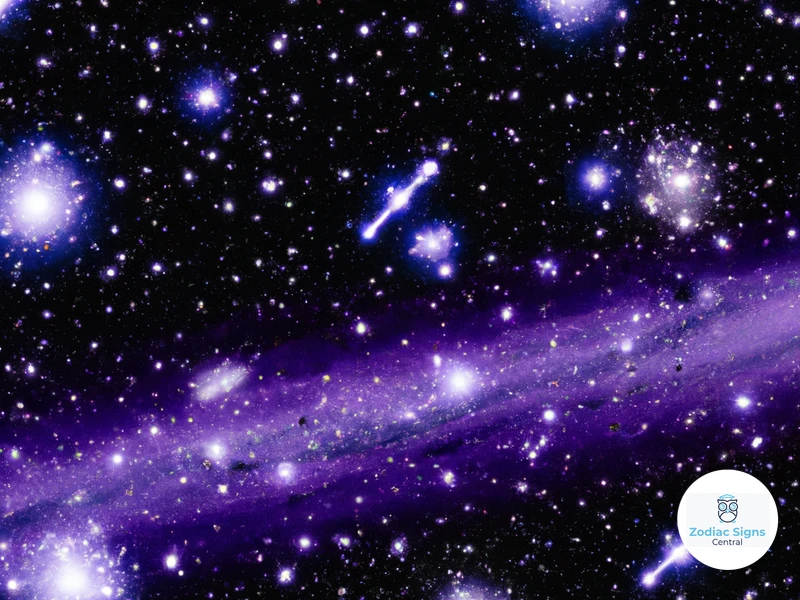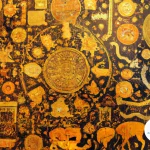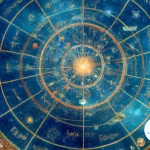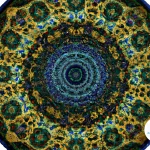Are you searching for a unique and intriguing way to deepen the intimacy in your relationships? Look no further than astrology. The ancient practice of astrology can offer valuable insights into compatibility and emotional connection between partners. By understanding the elements, exploring sun and moon signs, and leveraging the power of synastry and relationship houses, astrology can serve as a powerful tool for communication and personal growth. In this article, we will delve into the fascinating world of astrology and discover how it can help improve intimacy in relationships step-by-step. Whether you’re a seasoned astrologer or just curious about the stars, get ready to unlock the secrets of astrology and take your relationships to new heights.
Understanding Astrological Compatibility

|
1. The Elements: Fire, Earth, Air, and Water Astrological compatibility begins with understanding the elements of the zodiac signs. There are four elements: fire, earth, air, and water. Each element has distinct characteristics that can influence the dynamics of a relationship. Fire signs (Aries, Leo, Sagittarius) are passionate, energetic, and adventurous, and they can ignite the spark in a partnership. Earth signs (Taurus, Virgo, Capricorn) are practical, grounded, and dependable. They bring stability and reliability to a relationship. Air signs (Gemini, Libra, Aquarius) are intellectual, communicative, and social, adding mental stimulation and lively conversations to the equation. Water signs (Cancer, Scorpio, Pisces) are emotional, intuitive, and sensitive. They bring depth, empathy, and nurturing energy to the table. Understanding the elements can help identify potential challenges and strengths in a relationship, allowing couples to work through them and find balance. |
|
2. Sun Signs and Their Compatibility The sun sign, also known as the zodiac sign, represents one’s core personality and ego. Compatibility between sun signs is a popular aspect of astrological analysis. It involves comparing the characteristics, preferences, and tendencies of two individuals based on their sun signs to determine the potential for harmony or conflict. While every sun sign has its unique strengths and weaknesses, certain combinations tend to be more compatible than others. This doesn’t mean that incompatible sun signs can’t make a relationship work but understanding their dynamics can provide insights into potential areas of growth or challenge. For example, fiery Aries may clash with practical Taurus, or intellectual Gemini may struggle to relate to emotional Cancer. By understanding sun sign compatibility, couples can navigate their differences and leverage their similarities to cultivate a stronger bond. |
|
3. Moon Signs and Emotional Connection The moon sign represents one’s emotions, inner world, and instinctual responses. Understanding moon signs can offer profound insights into emotional compatibility and connection between partners. While the sun sign focuses more on the conscious aspect of the self, the moon sign speaks to our deeper emotional needs and desires. Couples with harmoniously aligned moon signs often have an intuitive understanding of each other’s emotions, creating a strong emotional bond. On the other hand, conflicting moon signs can lead to emotional misunderstandings and challenges in relating to each other’s feelings. Exploring moon signs in a relationship can enhance emotional intimacy by acknowledging and honoring each other’s emotional needs. By nurturing and supporting each other’s moon signs, couples can strengthen their emotional connection and create a safe space for vulnerability and growth. |
1. The Elements: Fire, Earth, Air, and Water
|
The four elements of astrology – fire, earth, air, and water – play a significant role in understanding astrological compatibility. Each element represents a distinct energy and personality traits that can influence relationships.
Understanding the elements can help identify the potential dynamics and challenges in a relationship. Fire and air signs may have an exciting and invigorating connection, but could also encounter conflicts due to differing approaches. Earth and water signs may create a stable and nurturing environment, but could also face challenges in balancing practicality and emotional needs. By recognizing the elemental energies at play, couples can proactively work on areas that need attention, celebrate their strengths, and create a harmonious bond. |
2. Sun signs and Their Compatibility
The compatibility between sun signs is a fascinating aspect of astrology that can shed light on the dynamics of a relationship. Each sun sign has its unique traits, strengths, and weaknesses that influence the way individuals interact with one another. Let’s delve into the compatibility between different sun signs:
Aries (March 21 – April 19) and Leo (July 23 – August 22): These two fire signs share a natural compatibility due to their shared enthusiasm, passion, and energy. Their relationship is filled with excitement and adventure, as they both thrive on new experiences and challenges.
Taurus (April 20 – May 20) and Virgo (August 23 – September 22): This earth sign pairing represents stability, practicality, and reliability. Both Taurus and Virgo value security and are dedicated to creating a comfortable and harmonious home life together.
Gemini (May 21 – June 20) and Libra (September 23 – October 22): Air signs Gemini and Libra share a mutual understanding of communication, intellect, and social connection. They enjoy engaging in meaningful conversations and are drawn to each other’s intellectual abilities.
Cancer (June 21 – July 22) and Scorpio (October 23 – November 21): This water sign pairing is characterized by deep emotional connections and intense sensitivity. Cancer and Scorpio understand and support each other’s emotional needs, fostering a profound bond.
Leo (July 23 – August 22) and Aquarius (January 20 – February 18): This fire and air sign combination brings together creativity, individuality, and a strong sense of self. Leo and Aquarius encourage each other’s unique qualities and have a natural chemistry that keeps their relationship exciting.
Virgo (August 23 – September 22) and Capricorn (December 22 – January 19): As earth signs, Virgo and Capricorn share a practical and grounded approach to life. They support each other’s ambitions and can form a strong foundation for a stable and harmonious partnership.
Libra (September 23 – October 22) and Sagittarius (November 22 – December 21): Air sign Libra and fire sign Sagittarius bring together a balance of intellect and adventure. They enjoy exploring new ideas and experiences together, creating a dynamic and stimulating relationship.
Scorpio (October 23 – November 21) and Pisces (February 19 – March 20): This water sign combination is characterized by deep emotional understanding and intuition. Scorpio and Pisces have a psychic connection, making their relationship intense and transformative.
Sagittarius (November 22 – December 21) and Aries (March 21 – April 19): Fire signs Sagittarius and Aries share a love for adventure, freedom, and excitement. They encourage each other to take risks and embrace new opportunities, making their relationship dynamic and passionate.
Capricorn (December 22 – January 19) and Taurus (April 20 – May 20): This earth sign pairing represents stability, practicality, and a deep sense of commitment. Capricorn and Taurus build a solid foundation for a long-lasting and loyal partnership.
Aquarius (January 20 – February 18) and Gemini (May 21 – June 20): Air signs Aquarius and Gemini share a strong mental connection and enjoy intellectual conversations. They support each other’s individuality and can have an exciting and dynamic relationship.
Pisces (February 19 – March 20) and Cancer (June 21 – July 22): Water signs Pisces and Cancer form an intuitively understanding and nurturing bond. They provide emotional support and create a safe space for vulnerability and growth.
3. Moon Signs and Emotional Connection
|
When it comes to emotional connection in relationships, exploring moon signs can provide valuable insights. The moon sign reveals our emotional needs, instincts, and innermost feelings. Each zodiac sign has a unique moon sign that influences their emotional landscape. Understanding your partner’s moon sign can help you connect on a deeper level and navigate emotional challenges with empathy and understanding. Here are some key points to consider:
By exploring moon signs, couples can deepen their emotional connection, enhance understanding, and create a more harmonious and fulfilling relationship. So take the time to explore your moon signs and discover the potential for emotional growth and intimacy. (For more information on how lunar transits influence career and finance, |
Communicating Through Astrology
|
1. The Power of Synastry Synastry is the practice of comparing and analyzing the birth charts of two individuals to determine their compatibility and understand the dynamics of their relationship. By examining the placements of planets, aspects between them, and house overlays, synastry can provide valuable information about the strengths, challenges, and overall compatibility between partners. It can reveal areas of harmony and areas that may require compromise or understanding. Through synastry, couples can gain insight into why they are drawn to each other, how they can communicate effectively, and how to navigate potential conflicts. Synastry can serve as a powerful tool for nurturing intimacy and fostering understanding between partners. |
|
2. Understanding Relationship Houses Relationship houses in astrology refer to the specific areas of life that are influenced by partnerships and romantic relationships. The relationship houses include the 5th, 7th, and 8th houses in the birth chart. The 5th house represents romance, creativity, and self-expression in relationships. The 7th house represents partnerships, marriage, and the qualities we seek in a partner. The 8th house represents intimacy, shared resources, and transformation within relationships. Understanding the significance of these houses in astrology can provide clarity on the themes and lessons that are likely to arise in a relationship. It can help couples navigate challenges, support each other’s growth, and deepen their connection on all levels. |
|
3. Using Venus and Mars to Nurture Passion Venus and Mars are two key planets in astrology that represent love, attraction, and passion. Venus signifies how we express and experience love, while Mars represents desire, sexuality, and assertiveness. Understanding the placements and aspects of Venus and Mars in each partner’s birth chart can shed light on their unique ways of nurturing passion and expressing desire. By exploring these astrological positions, couples can discover each other’s love languages, sensual preferences, and how to keep the flame alive in their relationship. Whether it’s through acts of romance, physical touch, or open communication, harnessing the energy of Venus and Mars can enhance the passion and intimacy within a relationship. |
1. The Power of Synastry
|
Synastry is a powerful astrological technique used to analyze the compatibility and dynamics between two individuals in a relationship. It involves comparing and analyzing the positions of planets in each person’s birth chart to understand how they interact with each other. By studying how different planets align and aspects between them, astrologers can uncover the strengths, challenges, and potential areas of growth in a relationship. For example, the placement of Venus, the planet of love and romance, in one person’s chart in harmonious aspect to the other person’s Mars, the planet of passion and desire, can indicate a strong physical connection and compatibility. Additionally, synastry can help identify potential areas of conflict or tension, allowing couples to address and work through them. |
While there are numerous planetary combinations and aspects to consider in synastry, some key aspects to pay attention to include:
Synastry can be a complex and nuanced practice, requiring the expertise of a professional astrologer to interpret accurately. By delving into the power of synastry, couples can gain profound insights into the dynamics, strengths, and growth areas of their relationship. |
2. Understanding Relationship Houses
Relationship houses in astrology are specific sectors in the birth chart that correspond to different areas of a person’s life. These houses provide insights into the dynamics and themes of a romantic relationship. Each of the twelve houses represents a different aspect of love, partnership, and marriage.
1st House: The house of self. It influences how you present yourself to others and how you approach relationships.
7th House: The house of partnership. It is directly opposite the 1st house and represents your significant other or spouse.
5th House: The house of romance and creativity. It governs love affairs, attraction, and self-expression in relationships.
8th House: The house of intimacy and transformation. It delves into the deeper, more intense aspects of partnerships and shared resources.
10th House: The house of public image and career. It shows the impact of your career on your relationship and how it affects your partner.
Understanding relationship houses can help individuals gain clarity on the dynamics within their partnerships. For example, someone with their 7th house in Aries might seek a passionate and assertive partner, while someone with their 10th house in Libra might prioritize finding a partner who supports their career goals.
It’s important to interpret relationship houses in conjunction with other factors in the birth chart, such as planets and aspects, to get a more comprehensive understanding of how they influence a relationship. By analyzing these different houses, individuals can gain valuable insights into their relationship patterns, compatibility, and areas for personal and relational growth.
If you want to explore the influence of celestial bodies on relationships further, you may be interested in understanding the moon’s influence on zodiac signs. The moon’s placement in your birth chart can reveal important emotional needs and tendencies that shape your approach to relationships. Additionally, learning about the significance of Mars conjunct Sun transit in astrology can provide insights into how celestial events can impact your romantic partnerships.
3. Using Venus and Mars to Nurture Passion
Using Venus and Mars, the planets associated with love and passion, can be a powerful tool for nurturing passion in a relationship. Venus represents love, beauty, and harmony, while Mars represents desire, passion, and assertiveness. By understanding the placement of Venus and Mars in both partners’ birth charts, couples can gain insightful information about their unique desires, needs, and approach to relationships. If Venus is in a compatible position with Mars in both charts, it signifies a strong physical and emotional attraction. Couples can enhance passion by exploring activities that stimulate their Venus and Mars energies. For example, Venus in Aries may enjoy adventurous and spontaneous dates, while Mars in Taurus may prefer sensual and romantic gestures. Understanding these planetary placements can help couples create a more passionate and fulfilling romantic life together. It’s important to note that Venus and Mars are just one aspect of a birth chart, and a comprehensive analysis of the entire chart provides a more accurate picture of a couple’s compatibility and potential for passion.
Deepening Emotional Connection with Astrology

-
1. Exploring Your Birth Charts Together
Exploring each other’s birth charts can be a transformative experience that deepens the emotional connection between partners. A birth chart, also known as a natal chart, is a map of the sky at the moment of someone’s birth. It provides valuable information about an individual’s personality traits, strengths, challenges, and patterns of behavior. By sharing and analyzing birth charts with your partner, you gain a deeper understanding of each other’s unique qualities and life experiences. You can identify commonalities and differences, which fosters empathy and appreciation for your partner’s journey. This process allows you to recognize the complexities and multi-dimensionality of your relationship, enhancing emotional intimacy and fostering a sense of shared growth. -
2. Identifying Compatibility Challenges
Astrology can help identify compatibility challenges that may arise in a relationship. By examining the aspects and planetary placements in your birth charts, you can gain insights into potential areas of conflict or tension. For example, a challenging aspect between Venus and Mars in the birth charts suggests possible differences in the expression of love and desire, which may impact the emotional connection. By understanding these challenges, couples can proactively address them through open communication, empathy, and compromise. Astrology provides a roadmap for growth, allowing partners to work together to navigate these challenges and strengthen their emotional bond rather than allowing them to create distance or conflict. -
3. Using Compatibility Reports for Insight
Compatibility reports generated through astrology can provide valuable insights into the dynamics of a relationship. These reports analyze the compatibility between two individuals based on various astrological factors, such as the positions of the sun, moon, and other planets at the time of their birth. They offer detailed information about the strengths, challenges, communication styles, and shared values within a relationship. By exploring these reports together, couples can gain a deeper understanding of their compatibility and create a foundation for a stronger emotional connection. They can also identify areas of growth and potential conflicts, allowing them to proactively work on nurturing the relationship and enhancing emotional intimacy.
1. Exploring Your Birth Charts Together
-
Exploring Your Birth Charts Together
Exploring your birth charts together can be a fascinating and insightful activity that deepens your understanding of each other’s astrological influences. A birth chart, also known as a natal chart, is a map of the sky at the exact moment and location of your birth. It provides a snapshot of the positions of the planets and other celestial bodies at that specific time, which influences your personality, strengths, weaknesses, and life experiences. By comparing your birth charts, you can identify areas of compatibility and areas that may require more understanding and compromise. Start by obtaining your birth charts, which can be generated online using your birth date, time, and location. Once you have your birth charts, explore them together, noting the positions of the sun, moon, and major planets. Discuss the traits and qualities associated with each placement and how they manifest in your lives. This exercise can help you gain a deeper appreciation for each other’s unique qualities and foster acceptance and understanding.
2. Identifying Compatibility Challenges
Strengthening the Relationship through Astrological Insights
Astrological transits are the current positions of the planets in relation to an individual’s birth chart. These transits can have a significant impact on relationships by bringing about changes, challenges, or opportunities for growth. By understanding the astrological transits affecting a relationship, couples can navigate these influences more consciously and make informed decisions. For example, a transit involving Saturn may bring about a period of stability and commitment, while a transit involving Uranus could introduce unexpected changes and excitement. By staying aware of these transits and their potential effects, couples can proactively adapt and respond to the energy at play, leading to greater understanding and harmony in the relationship.
Retrogrades, such as Mercury retrograde, occur when a planet appears to be moving backward in its orbit. While retrogrades are often viewed as challenging, they also offer valuable opportunities for reflection, reassessment, and growth in relationships. During retrogrades, communication, technology, and decision-making may experience disruptions and glitches. By being aware of retrograde periods and their potential effects, couples can adopt a more patient and understanding approach, giving each other space to reflect and review. It’s an excellent time to revisit past issues, resolve conflicts, and work towards greater clarity and understanding. Embracing the power of retrogrades as a chance for introspection and growth can ultimately strengthen the relationship over time.
Astrological compatibility is not only about finding harmony between partners; it also highlights the growth areas within a relationship. By understanding the astrological compatibilities and the potential challenges between partners, couples can identify areas for personal and relational development. For example, if one partner has a strong Mars-Sun transit, it can indicate a potential power struggle or conflicts arising from ego clashes. Recognizing these growth areas allows couples to proactively address them, fostering understanding, compromise, and personal growth. Astrology provides valuable insights into the strengths and weaknesses of a relationship, allowing couples to work together consciously towards building a more fulfilling and harmonious partnership.
1. Working with Astrological Transits
When it comes to deepening the understanding of a relationship through astrology, working with astrological transits can provide valuable insights. Astrological transits refer to the current movement of the planets and how they interact with the natal chart. These transits can influence the energy and dynamics within a relationship. By analyzing the transits, individuals can gain a deeper understanding of the challenges, opportunities, and growth potential in their relationship. For example, a transit from Saturn to a partner’s Venus may bring about a period of increased commitment and stability, while a transit from Uranus may bring unexpected changes and disruptions. By paying attention to these transits, couples can navigate the changes and challenges together, fostering growth and resilience in the relationship. Working with an astrologer or studying transit reports can provide valuable insights into the timing of these transits and how to best utilize their energy for the benefit of the relationship. Astrological transits offer a unique perspective on the ebb and flow of a relationship and can help couples deepen their connection and weather any storms that come their way.
2. Harnessing the Power of Retrogrades
Retrogrades in astrology occur when a planet appears to be moving in the opposite direction from Earth’s perspective. While retrogrades are often associated with challenging or disruptive energy, they can also provide valuable opportunities for growth and reflection within a relationship.
One of the most well-known retrogrades is the Mercury retrograde, which happens multiple times throughout the year. During this period, communication and technology may be affected, leading to misunderstandings and disruptions. However, instead of viewing Mercury retrograde as solely negative, couples can harness its power by using it as a time for introspection and reassessment. It’s a chance to review communication patterns within the relationship and address any unresolved issues or miscommunications.
Another significant retrograde is Venus retrograde, which occurs approximately every 18 months. Venus is the planet associated with love, relationships, and beauty. During this retrograde, the energy shifts, and challenges may arise in matters of the heart. However, this period also invites a deeper exploration of relationship dynamics and values. It’s an opportunity for couples to reassess their shared vision, express and receive love more consciously, and make any necessary adjustments to nurture the relationship.
Additionally, Mars retrograde, which happens roughly every two years, can bring intensity and conflict to relationships. Mars represents passion, desire, and assertiveness. During this retrograde, it’s crucial for couples to be mindful of any buildup of frustration or anger. Instead of engaging in heated arguments, this is a time to channel Mars’ energy into constructive outlets such as physical activities or working on individual goals. This retrograde provides an opportunity to reflect on how power dynamics are expressed within the relationship and make adjustments to create a more harmonious balance.
Harnessing the power of retrogrades involves embracing the challenges they present and using them as opportunities for growth, reflection, and realignment. By navigating retrogrades with awareness and open communication, couples can deepen their understanding of each other and strengthen their bond even in the face of potential challenges.
3. Astrological Compatibilities and Growth Areas
Astrological compatibilities provide valuable insights into the dynamics of a relationship, highlighting areas of harmony and potential growth. While compatibility does not guarantee a perfect relationship, understanding the astrological influences can help couples navigate challenges and work towards a stronger and more fulfilling partnership. Identifying compatibilities allows couples to leverage their shared strengths and shared values, creating a solid foundation for the relationship. For example, if both partners have compatible sun signs, they may naturally understand and support each other’s core desires and motivations. Similarly, compatible moon signs can enhance emotional connection and understanding, fostering a deeper level of intimacy. However, it’s important to recognize that growth areas also exist within every relationship. These are areas where couples may face challenges or have differing needs and perspectives. Astrology can shed light on these growth areas, empowering couples to communicate openly, compromise, and work together towards mutual growth. By acknowledging and addressing these areas, couples can move beyond limitations and strengthen their bond. Astrology serves as a tool for self-awareness and self-improvement, allowing couples to grow individually and together. Embracing the growth areas highlighted by astrological compatibilities can lead to a more balanced and fulfilling relationship.
Conclusion

|
| In conclusion, astrology offers a roadmap for couples to navigate the complexities of their relationships. By delving into the elements, sun signs, and moon signs, partners can gain a deeper understanding of themselves and each other. Effective communication through the power of synastry and relationship houses allows for improved emotional connection and mutual understanding. Exploring birth charts and compatibility reports further deepens the emotional bond and provides valuable insights. Finally, working with astrological transits and understanding areas of growth can unleash personal and relational growth. By incorporating astrology into their lives, couples can strengthen their bond, nurture their passion, and embark on a journey of self-discovery and connection. |
Frequently Asked Questions
1. How can astrology help improve communication in relationships?
Astrology can improve communication in relationships by providing a shared language and framework for understanding each other’s needs, desires, and personality traits. It allows partners to recognize and appreciate their differences, enabling them to communicate more effectively and empathetically.
2. Can astrology predict the success of a relationship?
Astrology can provide insights into the potential challenges and strengths of a relationship based on astrological compatibility. However, the success of a relationship ultimately depends on the efforts, communication, and commitment of both partners.
3. Do all zodiac signs have compatible matches?
While certain zodiac signs may have more natural compatibility, there is potential for connection and growth in any relationship. It’s important to remember that astrology is just one tool among many for understanding relationships.
4. How can knowledge of the elements aid in relationship dynamics?
Understanding the elements in astrology can aid in relationship dynamics by identifying potential clashes or synergies. It helps partners recognize their different communication styles, emotional needs, and approaches to conflict resolution.
5. Is compatibility based solely on sun signs?
No, compatibility is not solely based on sun signs. It’s important to consider other factors such as moon signs, rising signs, and the overall birth chart for a more comprehensive understanding of compatibility between partners.
6. How can moon signs influence emotional connection?
Moon signs influence emotional connection by revealing our deeper emotional needs and how we respond to them. Partners with aligned moon signs can intuitively understand and support each other’s emotional well-being.
7. Can astrology help identify areas of growth in a relationship?
Yes, astrology can help identify areas of growth in a relationship by highlighting potential challenges and offering insights into each partner’s strengths and weaknesses. This knowledge can guide couples in working through their differences and fostering personal and relationship growth.
8. What is the significance of synastry in astrology?
Synastry, the comparison of two birth charts, is significant in astrology as it reveals the astrological compatibility and potential areas of connection or challenges between two individuals. It offers valuable insights into the dynamics of a relationship.
9. How can astrology reports provide insight into relationships?
Astrology reports provide detailed analyses of a couple’s compatibility, highlighting specific areas of compatibility and potential areas of conflict. They offer insights into relationship dynamics, helping partners understand and navigate their differences.
10. Can astrology predict the timing of relationship milestones?
While astrology can provide insight into the general timing and energetic influences surrounding relationship milestones, it’s essential to remember that free will and individual circumstances play a significant role in determining the timing of such events.






